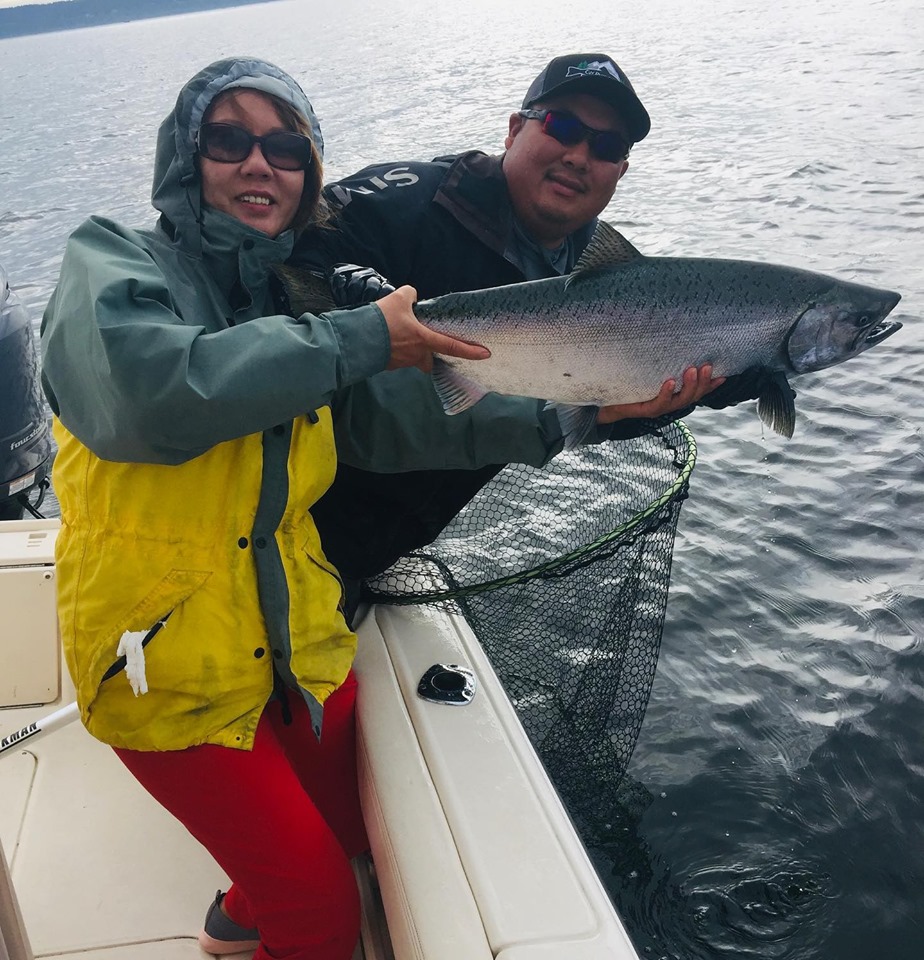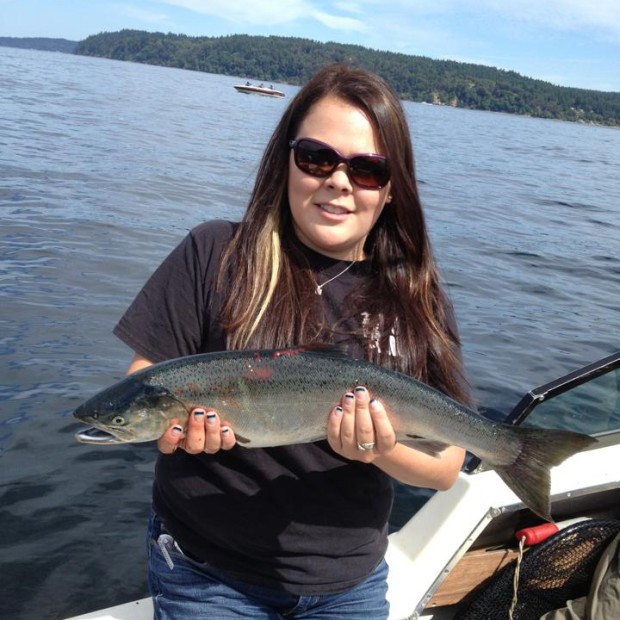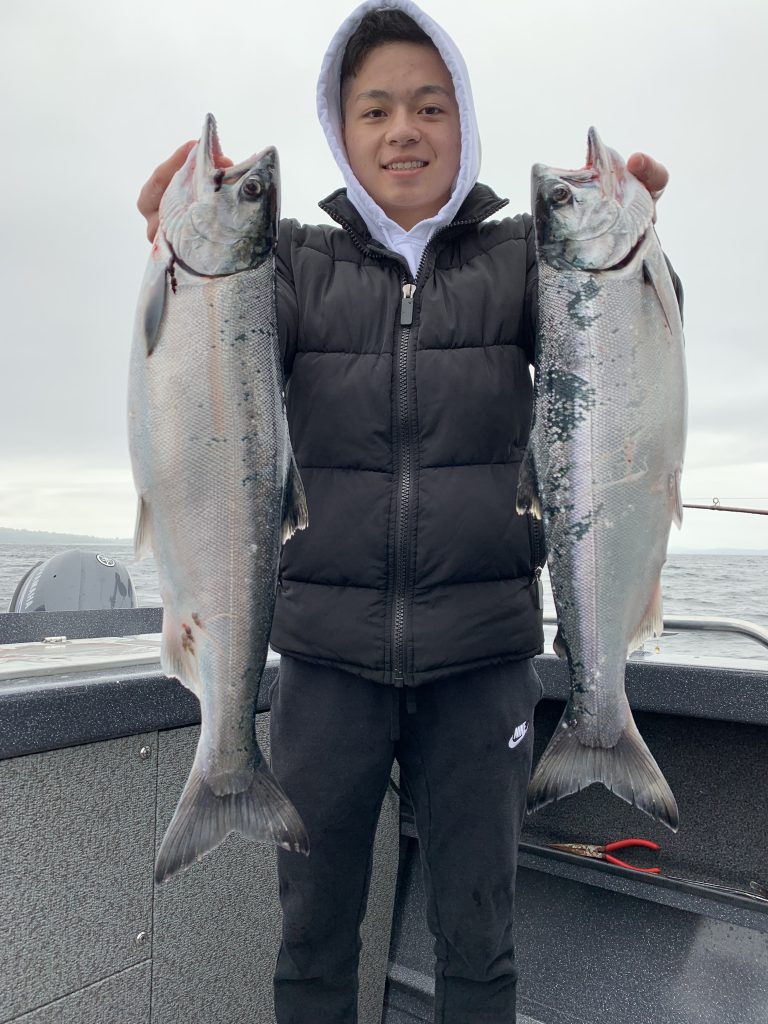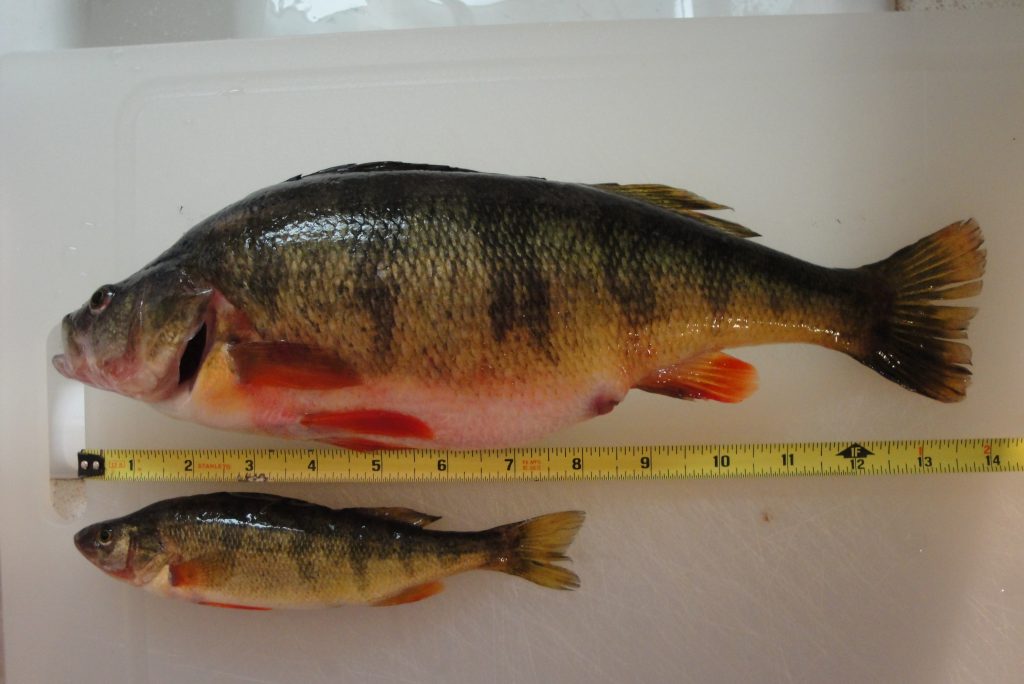Choosing a colorful fish to catch is happening all across the region as summer action peaks Leave a reply

No matter what color you choose – pink, yellow, silver or flashes of chrome mottled with purple and black – anglers can expect a rather colorful fishing experience in the months ahead.
Let’s first take a look at what will be blushing across Puget Sound and that’s a modest return of 608,388 pink salmon (a salmon that returns mainly during odd-numbered years and often referred to as “humpies” for a distinct hump that grows on their back near spawning time) to Puget Sound.
Some claim this could be the lowest pink return on record dating back to 1959, which is no blushing matter.
However, lets take a step back in time to 2001 when returns soared above 1 million and eventually hit a record run size of more than 10 million in 2009. The jacked pace continued when it hit 6-plus million in 2011, more than 8 million in 2013 and before dropping to 4 million in 2015.
By 2015, as Chicken Little would say the sky was falling around returning pinks when local rivers faced bathtub-like water temperatures coupled with an extended drought period.
Then came severe winter flooding, which left very few juvenile pinks to migrate out to the ocean where they eventually ran into “The Blob” a large mass of warm water that wreaked havoc on sea life.
Those negative environmental factors lead to a dismal 2017 actual pink return of around 511,000 (1.1 million was forecasted) and less than 82 percent of the historical 10-year average.
“We’re still digging out of a pretty big hole,” said Aaron Dufault, a WDFW pink salmon stock analyst. “It is a boom or bust situation for pinks, and we’ve had those busts in the past couple of odd-numbered years.”
Despite a very conservative pink forecast some are holding out hope after seeing early returns of healthy coho and chinook of what could lie ahead for pinks right on their migration heels.

Maybe those signals are correct since some early pinks began showing up in catches earlier this month. Pinks are much more prolific than other salmon species and are known to recover faster and easily adapt to different spawning locations.
Pink returns are based off fry production and a breakdown of the 2019 forecast for the Nisqually is 24,476; Skagit, 114,769; Stillaguamish, 47,919; Snohomish, 128,362; Green, 141,130; Puyallup, 47,905; Nisqually, 25,380; South Puget Sound, 143; Hood Canal, 70,675 plus 4,200 of hatchery origin; and Strait of Juan de Fuca, 7,629 plus 42 of hatchery origin.
The Puget Sound pink run usually peaks in mid-August, and in southern Puget Sound the last week of August and early September are best.
Pinks like to stay close to shorelines and avoid strong currents making them easily accessible to bank anglers especially during an hour before and right after a flood tide or at slack tide.
The most effective lures in saltwater areas are smaller-size hot pink mini squid or small spoons tied 13 to 16 inches behind a white colored dodger or silver flasher. Many prefer the smaller 8-inch Pro-Troll flasher with a slightly longer leader of 15 to 20 inches.
A standard small size “firecracker-size” cut-plug herring will also catch their fair share of pinks. A pink Buzz Bomb or Point Wilson type jig is another go-getter. Others like using a pink Rotator trailed behind a small pink plastic squid. Fly anglers will toss a size 4 Pink Flashabou Comet or just about any other pink-colored fly.
Prime saltwater shoreline locations for pinks are Lincoln Park in West Seattle; Carkeek Park; Alki Point; Golden Gardens near Shilshole Bay; Redondo Beach; Dash Point State Park pier and shoreline; Fort Casey, Keystone, Bush Point and Lagoon Point off the west side of Whidbey Island; Point Wilson near Port Townsend; Point No Point; Marrowstone Island’s eastern shoreline; Possession Point Bait House; Browns Point Lighthouse Park in Tacoma; Picnic Point in Edmonds; Mukilteo Lighthouse shoreline and nearby ferry pier; Edmonds Pier; Point Defiance Park in Tacoma; Fort Casey State Park; and Deception Pass.

Pinks aren’t the only game and so far, the coho aka “silvers” and hatchery king fisheries have been a pleasant surprise from the coast clear into open areas of Puget Sound and the Strait of Juan de Fuca.
Starting this Thursday (July 25), thousands of anglers are expected to converge in central and northern Puget Sound (Areas 9 and 10) for hatchery kings and if there are any early positive signs it’s the good action being found right now in open marine areas.
Much of the focus will be on northern Puget Sound’s brief four-day opener (July 25-28) with a 3,491 hatchery-marked chinook quota (5,400 in 2018). A significant drop in the catch quota probably means the season won’t likely go beyond the initial opener. Even if they’re not additional days to catch kings, Area 9 will remain open July 29 to Sept. 30 for pinks and hatchery coho.
Popular locations are Possession Bar; Point No Point; in front of Edmonds Marina breakwater; Pilot Point; Double Bluff north to Fort Casey on west side of Whidbey Island; Foulweather Bluff; and Midchannel Bank to Point Wilson off Port Townsend.
Just to the south near the Seattle skyline lies central Puget Sound (Area 10), which opens for hatchery chinook this Thursday (July 25) through Aug. 31 but will close for chinook retention once the quota of 3,057 (4,473 in 2018) is achieved. Once the quota is reached it will remain open for a coho and pink directed season through Nov. 15.
Target hatchery kings off Jefferson Head; West Point south of Shilshole Bay; Point Monroe, Skiff Point and Yeomalt Point off Bainbridge Island; Jefferson Head; Richmond Beach to the Edmonds oil dock; Kingston; Allen Bank off Blake Island; Southworth; and north end of Vashon Island near the ferry landing.
The resident coho fishery remains consistently good in central Puget Sound for resident coho.
Other options for hatchery kings are San Juan Islands (closes after July 31), Strait of Juan de Fuca, the Tulalip bubble fishery and south-central and southern Puget Sound. There will be a short inner-Elliott Bay king fishery from Aug. 2-5 and additional days may occur if in-season data shows the run to be stronger than expected.
Before heading out the door, check the WDFW website at https://wdfw.wa.gov/ for any possible emergency closures this month.
Yellow perch are a colorful summer fishing option
Looking to get someone hooked on fishing? Then look no further than yellow perch, a fish population that is very abundant and easy to catch at this time of the year in Lake Washington and other statewide lakes
Lake Washington – which is 20 miles long and covers more than 22,000 acres – is teeming with yellow perch.

Their population levels in this large urban lake is strong and yearly recruitment and survival rates are so good that there’s no daily catch limit on them. Most yellow perch average 7 to 10 inches along with some “jumbos” hitting the 11- to 12-inch range.
WDFW experts claim the official state record could one day come from Lake Washington. The current state record of 2.75 pounds was caught by Larry Benthien at Snelson’s Slough in Skagit County on June 22, 1969.
The reason behind this possibility is due in part to the ample feed and room for yellow perch to grow in Lake Washington, which is the second largest natural-bodied lake in Washington. Female perch are the largest and tend to grow much faster (usually maturing in three to four years) and can live if 8 to 10 years.
The best time of the year to fish for yellow perch begins around July when the water heats up, and peaks from August through October.
Look for schools of yellow perch in shallow water, 15 to 35 feet, and close to the shoreline. They prefer covered areas around weed beds, milfoil, aquatic weeds and lily pads or under docks, piers and overhanging trees and brush.
Popular locations to fish are Seward Park; Kenmore log boom and pier; Juanita Bay; Magnuson Park shoreline; Andrews Bay; Newport area and slough; Yarrow Bay; Gene Coulon Park in Renton; Mercer Island near Luther Burbank Park; and off Leschi Park, Madison Park, Stan Sayres Pits and Mount Baker Park. Areas from the Montlake Cut into Lake Union are also good especially off Gasworks Park.
A light-to-medium-action trout fishing rod with a spinning reel attached to 4- to 6-pound test line works best. Use a worm and drop-shot (egg-style) weight attached to a three-way swivel or Sniper Lure Snubs – a colorful tiny 3-inch plastic worm. Live maggots, a skirted crappie jig work well. After you catch your first perch cut a small chunk of the meat or even a perch eyeball as bait.
Other good perch lakes are Sammamish near Issaquah; Kapowsin southeast of Puyallup; Beaver and Pine near Issaquah; Sawyer northwest of Black Diamond; Harts southeast of Yelm; Goodwin northwest of Marysville; Stevens east of Everett; American near Fort Lewis; Angle in Sea-Tac; Desire in Renton; and Meridian in Kent.

